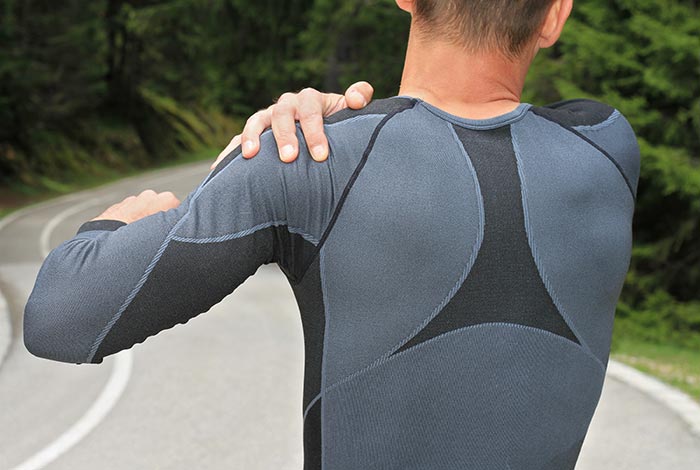Shoulder instability may develop as a result of repeated injuries to the shoulder or because the joint has been subjected to repetitive strain, for example, if you have a job or play a sport that involves making repeated overhead movements (working as a carpenter, for example, or playing tennis). In some cases, shoulder instability may be due to structural abnormalities in the shoulder. People who are born with hypermobility have looser ligaments than other people which makes their shoulder feel loose, leaving it prone to dislocations and shoulder instability.
Causes of Shoulder Instability
No other joint in your body has a wider range of movement than your shoulder. This is what enables you to rotate your arm, stretch above your head or reach behind your back. However, this also means the shoulder is prone to injury and dislocations. Strong muscles and tendons around the joint keep the head of the humerus inside the socket while allowing the shoulder to move freely. However, if these can become damaged, loose or torn, they become less effective at keeping the joint in place and shoulder instability can develop. Repeated shoulder dislocations or serious injury can lead to shoulder instability. In fact, around half of all people who dislocate their shoulder may go on to develop further dislocations and/or instability.
Symptoms of Shoulder Instability
Shoulder instability may develop slowly over time if the cause is a repetitive strain injury. You may notice that certain movements, such as throwing a ball, begin to cause pain or that the shoulder joint feels loose even when doing simple activities like getting dressed. You may develop numbness or tingling in your hand. If you experience a sudden traumatic injury the primary symptom will be pain.
Diagnosis of Shoulder Instability
Alongside a physical examination, your doctor may suggest an X-ray. This will show whether the shoulder bones are in the right place and appear normal. An MRI arthrogam scan will enable the doctor to see the soft tissues in detail which will reveal any problems with the ligaments, tendons or labrum (the cartilage surrounding the joint).
Treatment of Shoulder Instability
Treatment for shoulder instability focuses on relieving pain and strengthening the joint in the first instance as well as improving stability and flexibility. Painkillers and anti-inflammatories can be used to manage the pain and a physiotherapist can recommend exercises to strengthen and balance the rotator cuff muscles, which help to keep the ball within the shoulder socket. If you have a torn labrum you may need surgery to repair it. The usual approach is an arthroscopic (or keyhole) surgical repair, and the surgeon may also tighten the shoulder capsule. In some cases where there is significant bone damage, open surgery may be necessary. Your orthopaedic surgeon will discuss the cause of your shoulder instability and make recommendations based on your particular anatomy, symptoms and general state of health.
OUR CONSULTANTS
We are an experienced and highly qualified team of orthopaedic surgeons using the latest surgical and non-surgical techniques to eliminate or reduce pain so our patients can experience the best possible quality of life.
.
BOOK A CONSULTATION
Whether you have an existing diagnosis or you are keen to discover what is causing your symptoms, contact us to arrange a consultation. We can organise any tests you require and discuss your treatment options.
What Our Patients Say

